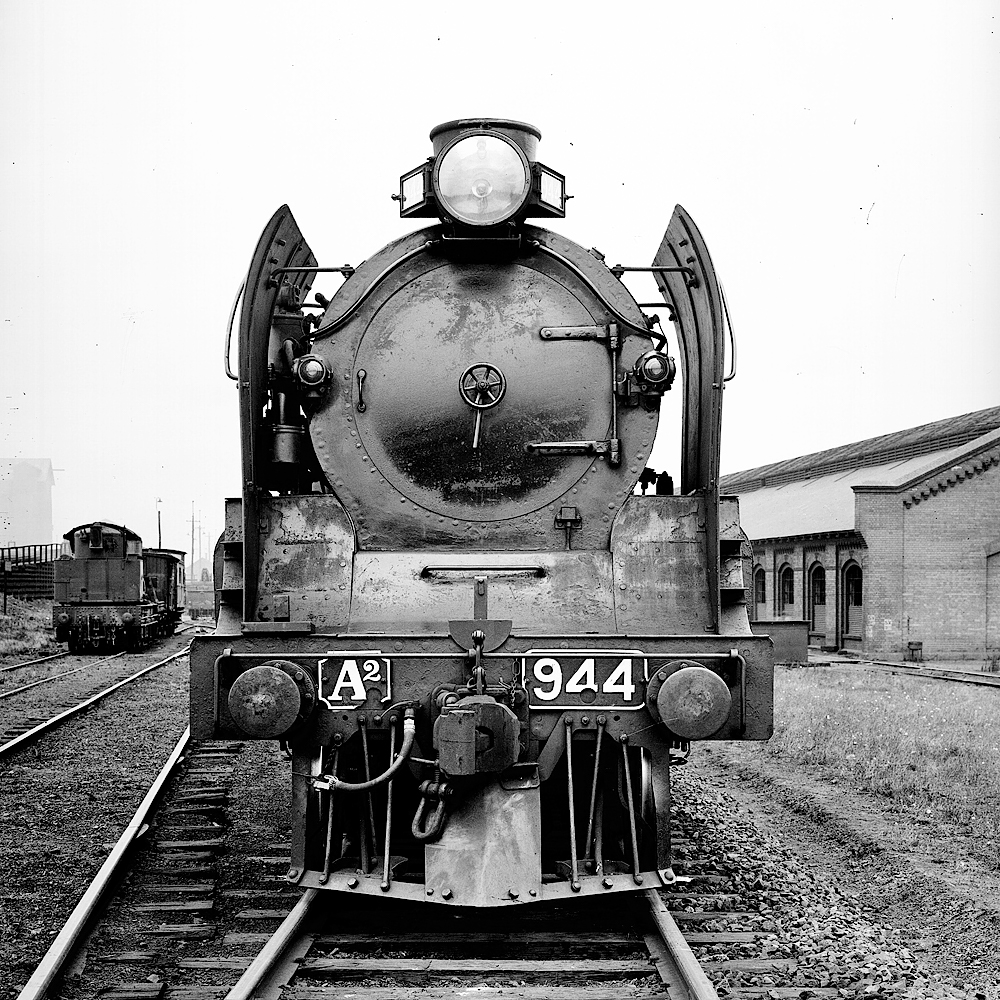 |
 |
|||
| A2 steam locos | ||||
| Wheel arrangement 4-6-0 | ||||
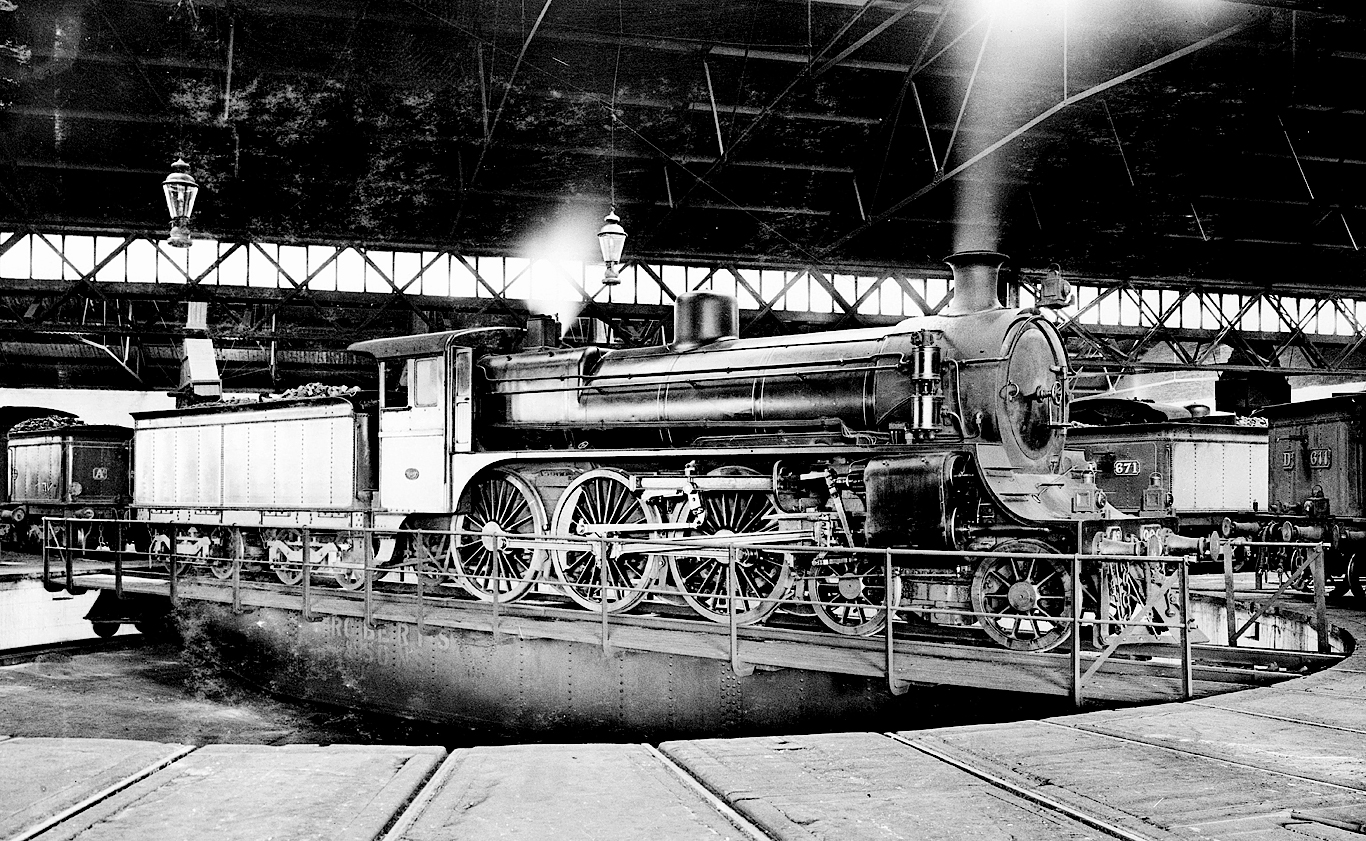
ABOVE: The turntable was installed early 1908 and the A2 sitting upon it was the reason why. Whilst the earliest A2 Class locomotives could just fit on a 53’-0” turntable the 12’-0” centre to centre tender behind the later Stephenson and all the Walschaerts engines necessitated the provision of 70’-0” turntables. The lube lines from the cab confirm that in common with all other Walschaerts A2s the locomotive was fitted with two Detroit hydrostatic lubricators. (Caption by Philip Dunn)
|
|
- Prior to 1921 all locos were painted in some variant of Canadian red, after this solid black became the standard scheme.
- All received modified front ends in the 1930's which improved loco efficiency by reducing cylinder back pressure. Enginemen called the modified locos "Basher engines" to distinguish them from non-modified A2s. This modification caused visiblity problems due to drifting smoke which resulted in the fitting of large smoke deflectors.
- Electric headlights began to be fitted from 1926
- Staff exchangers also fitted from 1926
- All Walschaert locos 940 - 999 (except 956 & 958) were equipped as oil burners beginning 1946
- From 1954, 6 Stephenson locos were altered for service as yard pilots by fitting shunters steps/protective sideboards and the removal of smoke deflectors.
- Brake equipment comprised No 4 automatic and engine/tender retaining valves. In the 1920's 911 & 951 were fitted with straight air brakes in lieu of the retainers.
- Between 1923 and 1949 remaining non superheated Stephenson locos were reclassified/renumbered as A1 class. Upon superheating these locos were reclassified/renumbered as A2s.
- At least 5 A2s were retrofitted with Boxpok solid driving wheels.
| Number in Class | 185 |
| Number group | 816 - 999 |
| Construction period | 1907 - 1922 |
| In service | 1907 - 1963 |
| Where built | Newport, Ballarat & Bendigo workshops |
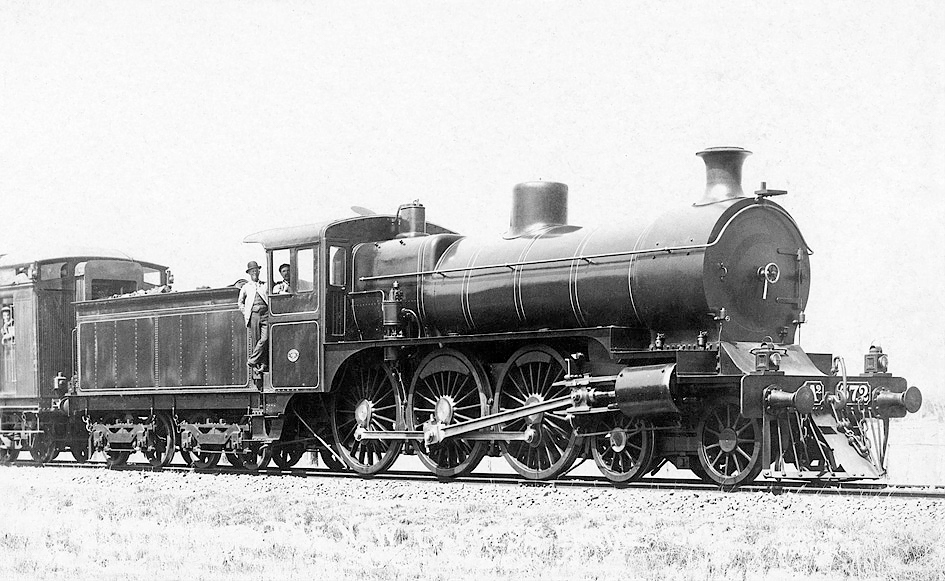
ABOVE: A brand-new pattern engine A2 572 at the head of a North East passenger train. The engine was placed on the register 2nd December 1907. The locomotive history book entry describing A2 572 notes that “Detroit sight feed lubricators” were fitted. As no lubricator lines running externally down the boiler to the valve chest are to be seen on photograph, it is presumed that single feed sight feed lubricators were fitted in a similar way to those fitted to the early DD class and predecessor AA class locomotives. Two dashpot lubricators were mounted on the smokebox front feeding either the piston tail rods or the steam chests. A small box for trimmings to feed lubricating oil to the engine bogie centre was also mounted on the front of the smokebox. A2 572 was fitted with an AD 68 (Tender Tank Diagram 1) tender tank of 98 cwt coal and 4460 gallons capacity on a 10’-6” bogie centre to bogie centre underframe. This tender was identical to those equipping the concurrently manufactured DD class locomotives and was to be utilized for the first four orders of A2 locomotives. The air compressor was mounted off the engine frame and suffered from excessive vibration leading to air and steam pipe fractures. From 1910 the air compressors so mounted were moved to brackets mounted on the smokebox. (Caption by Philip Dunn)
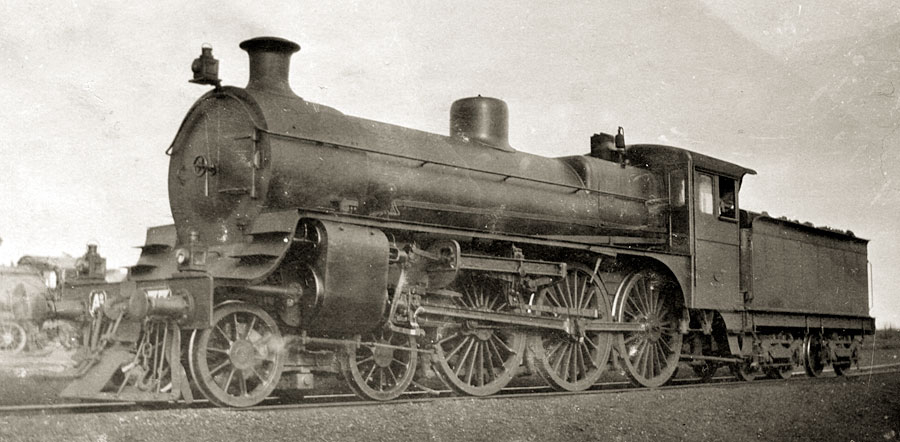
ABOVE: Walschaert A2 in as built condition in black livery circa 1920's
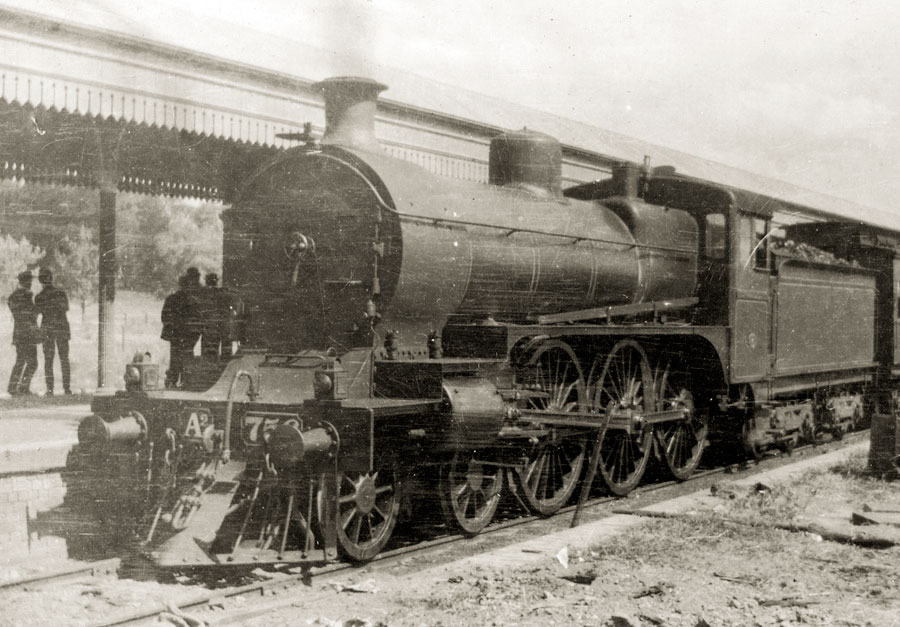
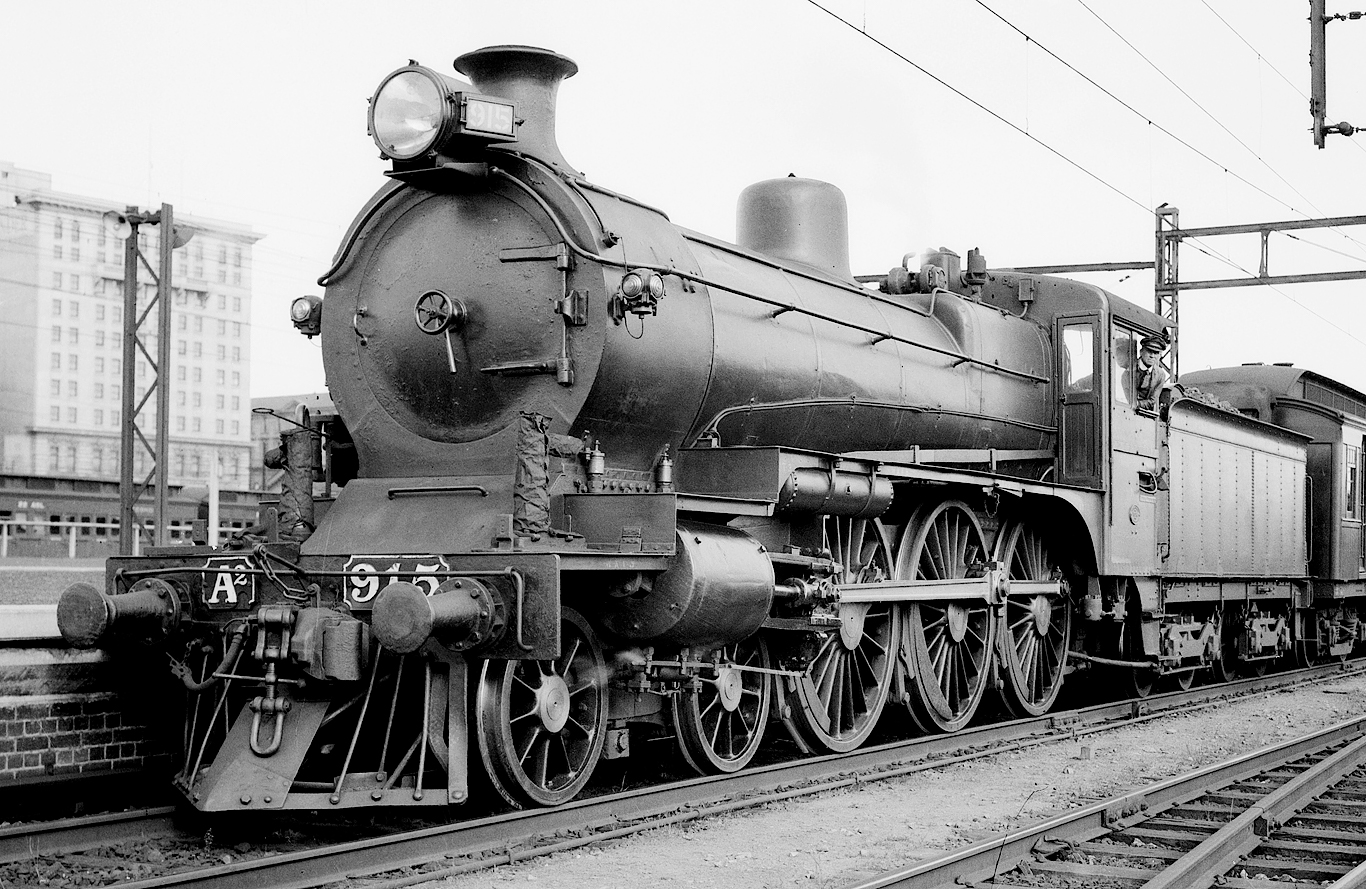
ABOVE: The 98th A2 to enter service, A2 915 entered in service 12 August 1914. It was fitted with a Robinson superheater 20 September 1924, autocoupled 20 September 1932, fitted with electric light 12 September 1929 and a staff exchanger 20 September 1932. It was equipped with MFE 13 March 1935 so the photo must have been taken between late 1932 and early 1935. (Caption by Philip Dunn)
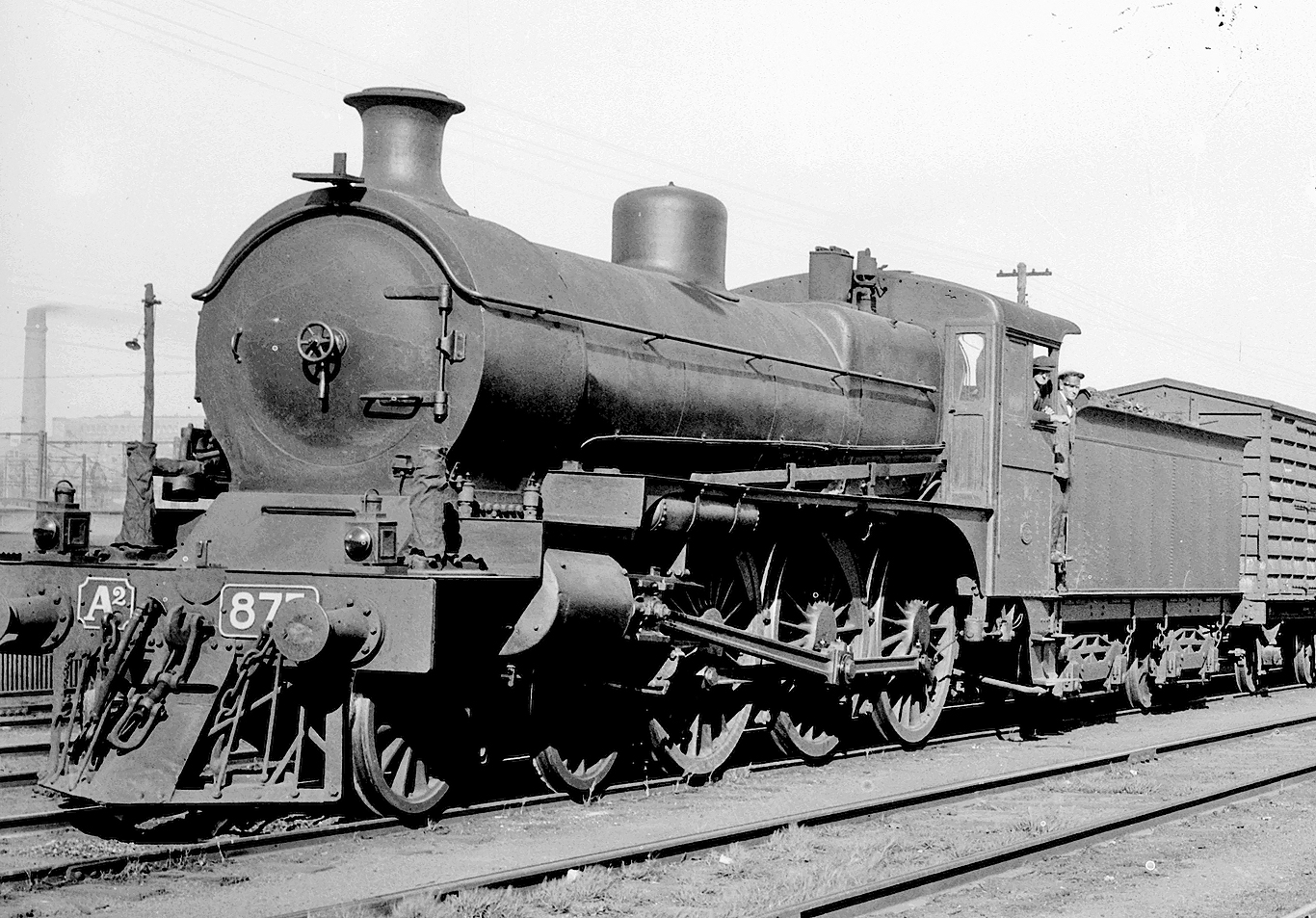
ABOVE: A2 875 in Melbourne yard. The loco is yet to receive MFE, electric headlight and auto couplers. It was superheated and re-classed and re-numbered A2 875 on 9th January 1931 and was auto-coupled in Feb 1934 so the photo must have been taken between these two dates. (official VR photo)
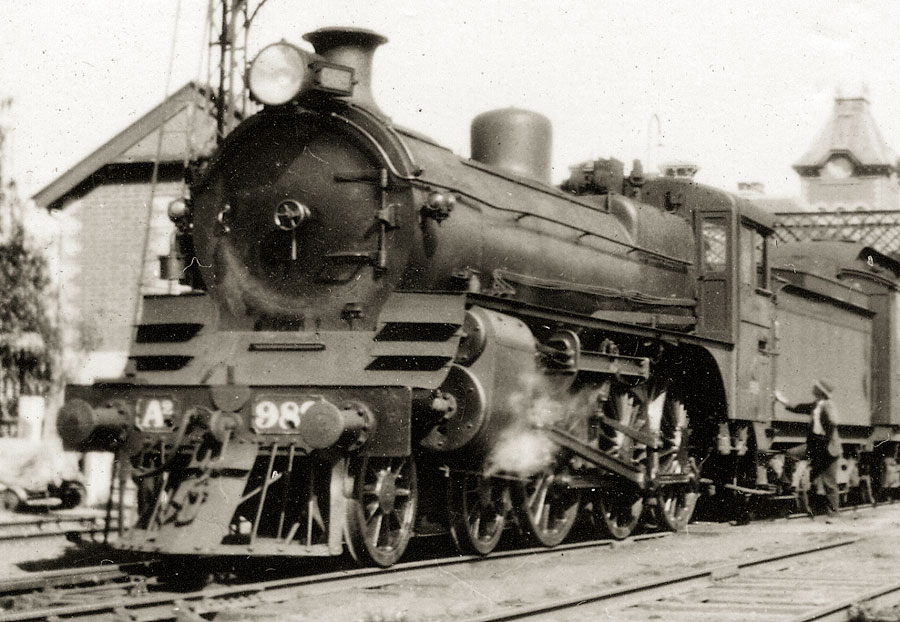
ABOVE: Walschaert A2 989 equipped with electric headlight and staff exchanger, circa 1932
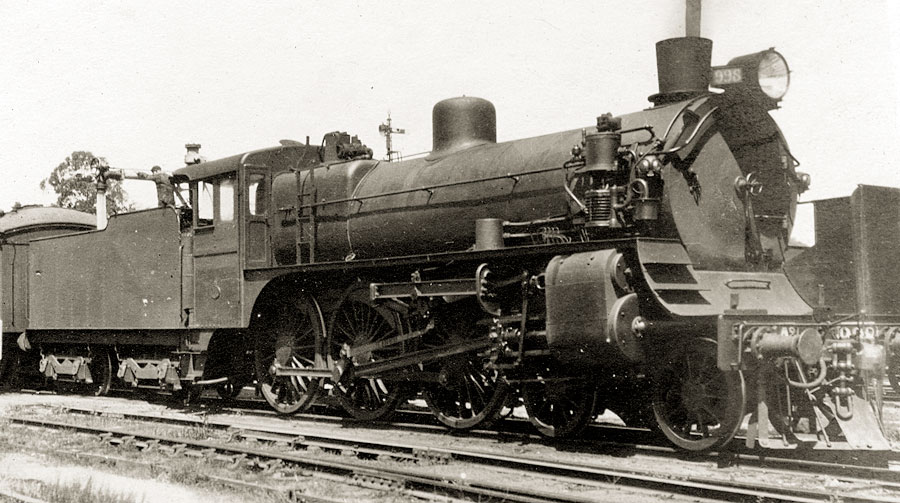
ABOVE: Walschaert A2 998 with modified front end and experimental bucket style funnel, 1935.
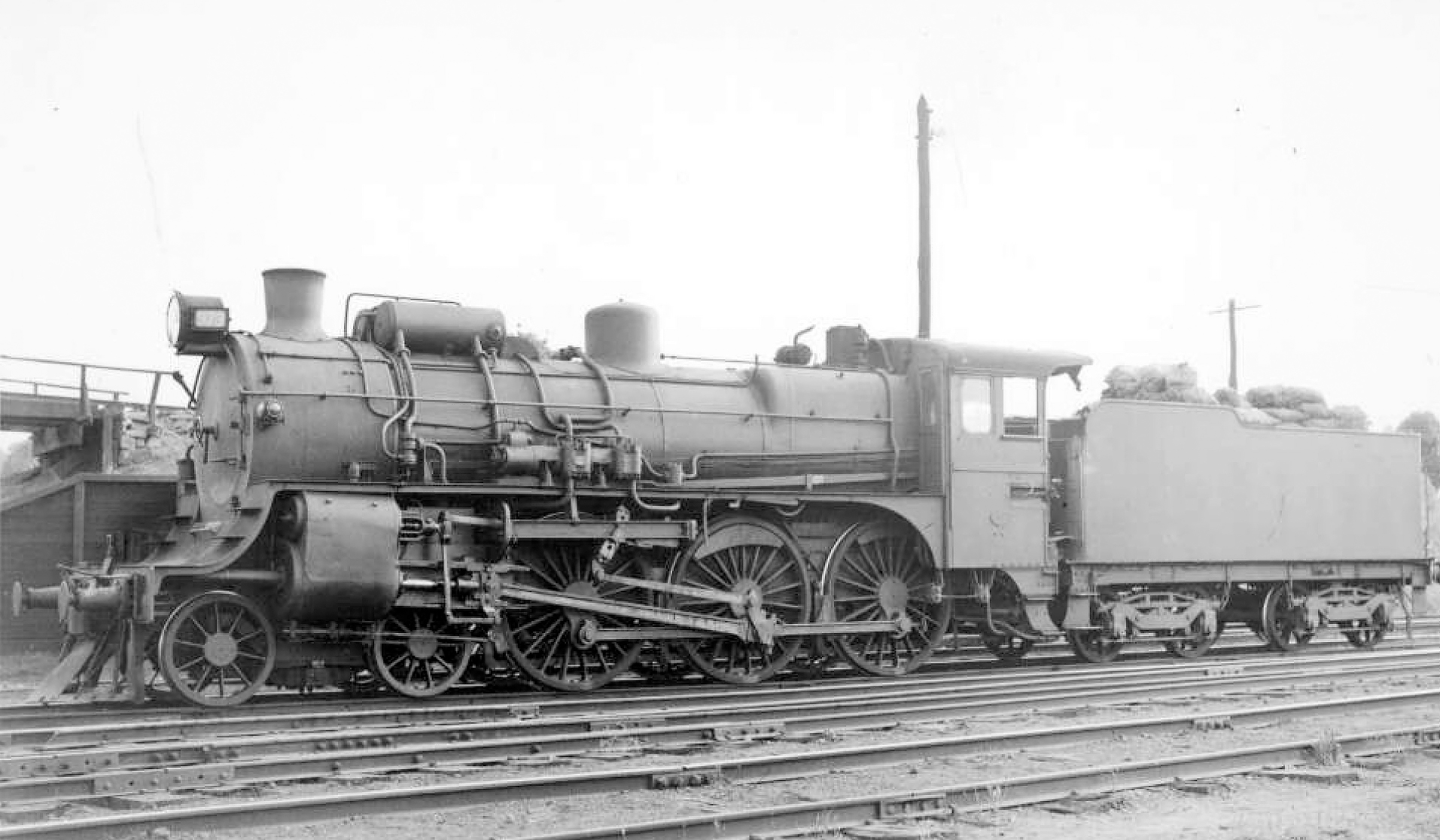
ABOVE: A2 973 was fitted with a Feedwater Heater as a test in 1935. The device was removed in 1947. (NLV collection)
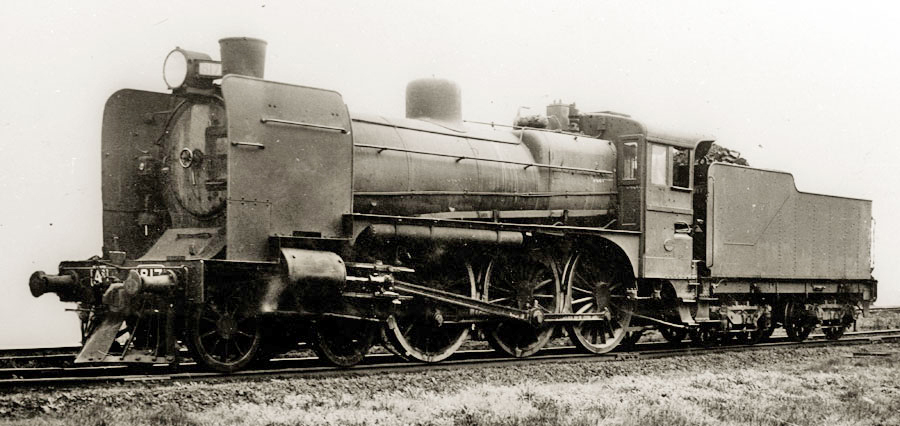
ABOVE: The A2 that most people were familiar with was in its later guise with modified front end, plain funnel and smoke deflectors, Stephenson A2 817.
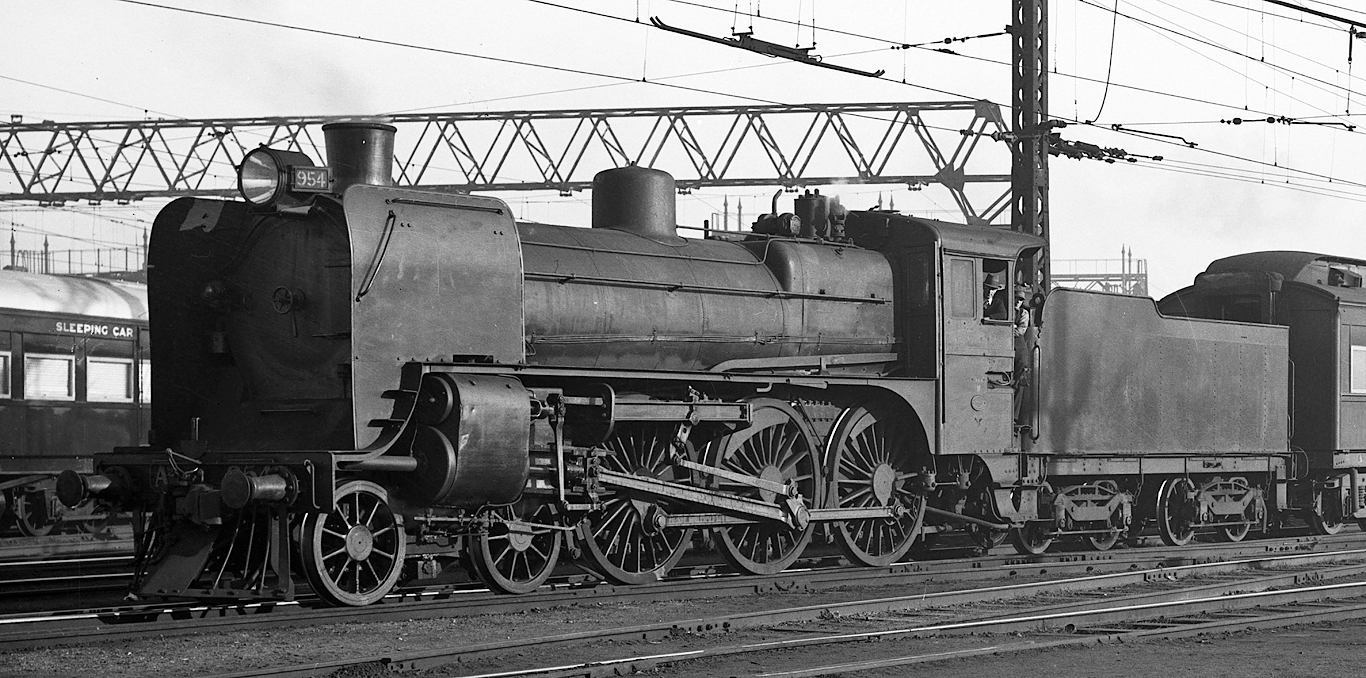
ABOVE: A2 954 (formerly 1054) after getting its MFE and smoke deflectors (1936) but before conversion to oil burning, (1946)
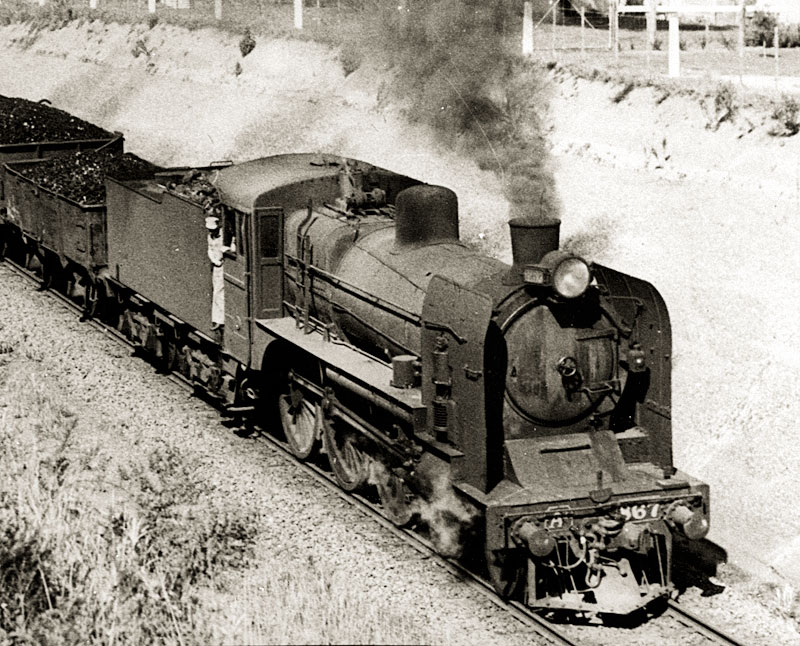
BELOW: Walschaert A2 944 in its later form with deflectors.
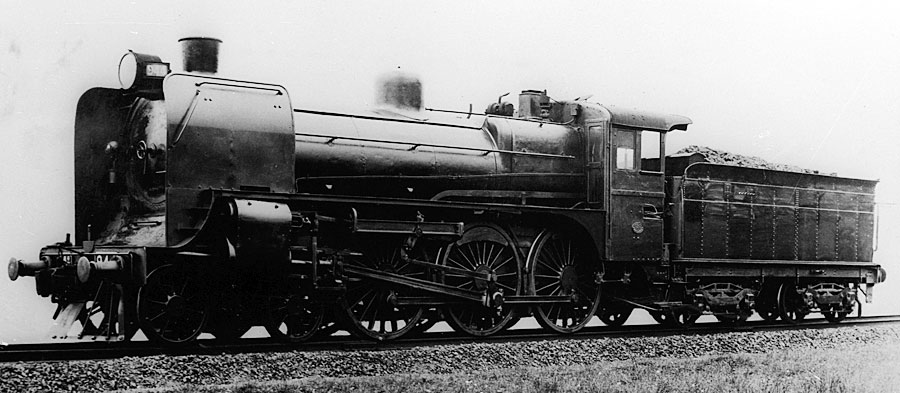
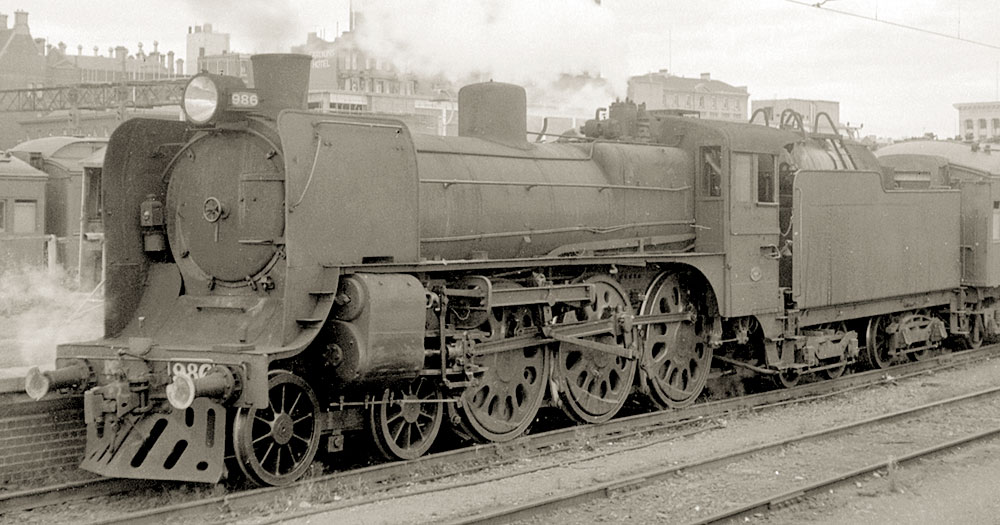
ABOVE: About as modified as an A2 could get: oil burning, deflectors, Boxpok drivers, A2 986 at Spencer St circa 1960. (Photo courtesy Peter Bruce)
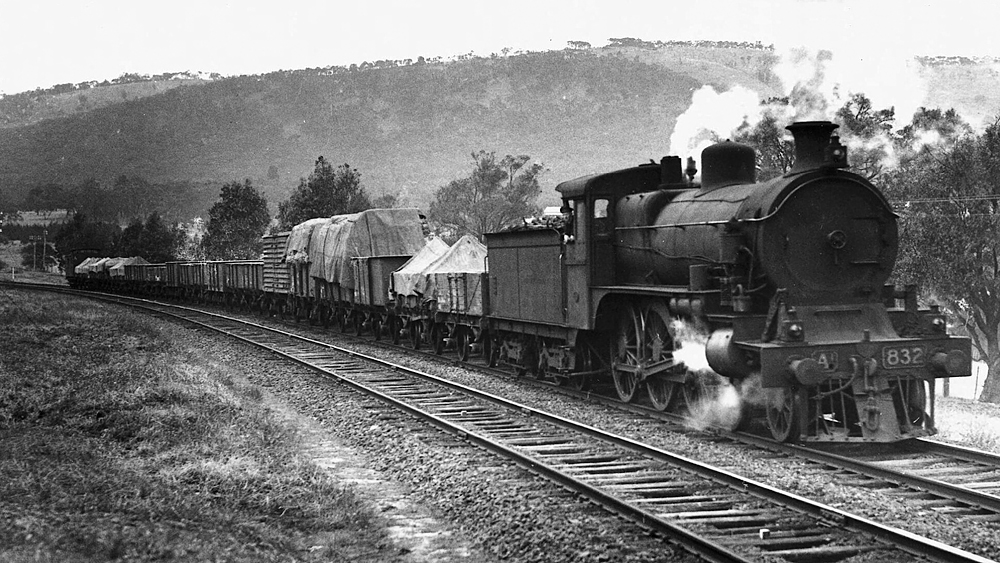
ABOVE: A1 832 on a down goods at Kilmore East prior to auto couplers, electric headlight and modified front end circa mid 1930's. The A1 classification was used to denote A2s that had not been superheated. Between 1923 and 1949 remaining non superheated Stephenson locos were reclassified/renumbered as A1 class. Upon superheating these locos were reclassified/renumbered as A2's (J. L. Buckland collection, courtesy National Library of Australia.)
